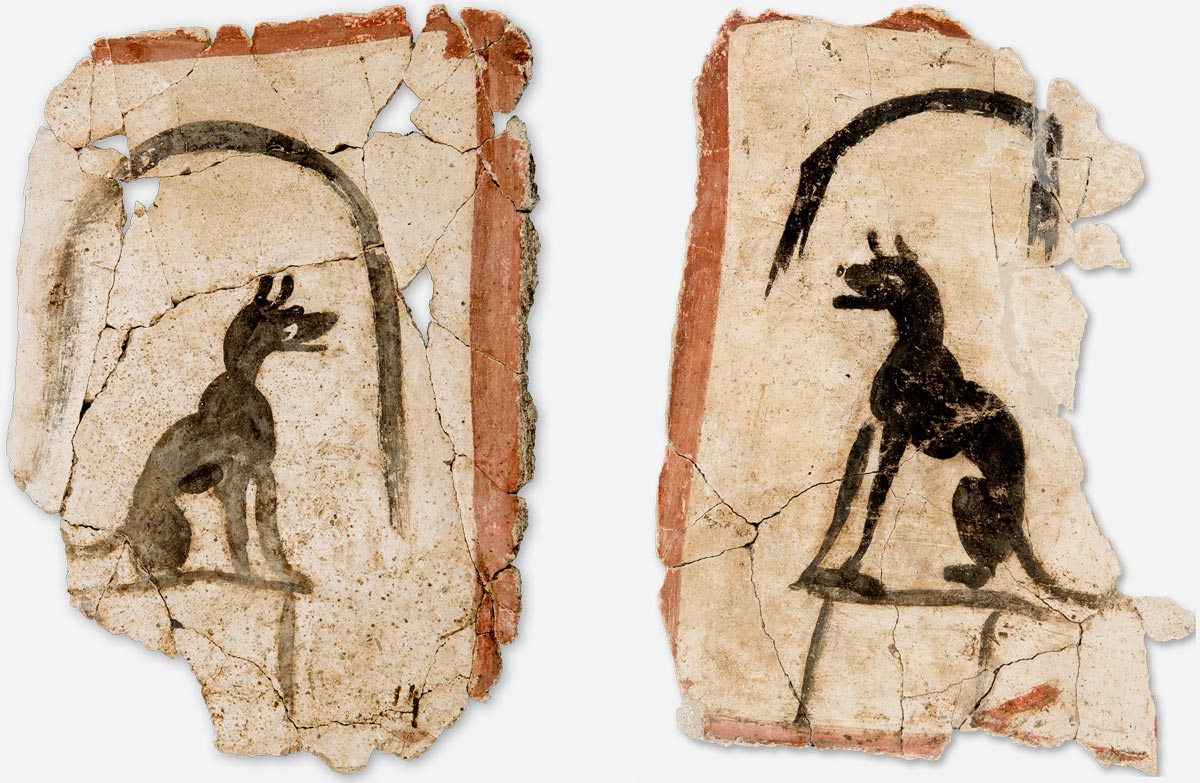Jackal Gods at Terenouthis
Artifacts from Terenouthis, a cemetery site in northern Egypt excavated by the University of Michigan in 1935, show how the jackal gods are represented in burials in the Roman period.
The Michigan excavations yielded nearly 200 carved stone stelae, mostly of the later 2nd century AD, that show the deceased and often record his or her name, age, and other information. In these representations, the dead are often accompanied by figures of jackals, usually a single jackal but sometimes two. These jackals clearly represent Anubis (and, when two are involved, Wepwawet), serving as both guardians and guides for the dead person.

These funerary stelae were mounted in niches in mud-brick constructions that served as a focus for offerings. The niches themselves were sometimes decorated with paintings on plaster that often further invoke the protection of the jackal gods. The paintings from a niche at Terenouthis show images similar to the stelae, painted in vivid colors, of jackals flanking an image of the deceased.




